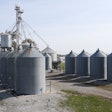
With headlines dominating newspapers each day on horse meat contamination in Europe, E. Coli spinach scares in the United States and dog treats from Denver linked to Salmonella, it is more important than ever to have a traceability program in place for both humans and livestock.
A study by AMR Research, a U.S.-based international research firm, shows recalls are more common and costly than expected—expenses often exceed $10 million per recall, with companies losing twice that much. An effective traceability system can make many of these recalls avoidable. Safeguarding the quality of ingredients in animal feed is therefore essential in ensuring food safety.
Trace mineral contaminants
In recent years, contamination of trace mineral supplements has been causing more frequent problems across borders. China is a major supplier of inorganic minerals to the animal nutrition sector. Recently, trace elements shipped from China, including sources of zinc, copper and manganese, have been included in a list of products that are subject to enhanced checks before being allowed to enter the European Union. Cadmium and lead contamination have been identified as the potential hazards in these shipments.
Dioxin is a general term for a large group of fat soluble organo-chlorine compounds, the polychlorinated dibenzodioxins and dibenzofurans, about 30 of which are significantly toxic. Dioxins can potentially be formed whenever organic compounds, chlorine and high temperatures are involved. Common sources include volcanic eruptions, forest fires, exhaust emissions, incinerators and in the manufacturing of chemicals, pesticides and paints. Dioxins can also be formed during the processing of inorganic minerals. Metals, especially copper, can act as catalysts in dioxin formation.
Dioxins are termed “persistent organic pollutants” because they are very stable, resisting physical and biological breakdown to remain in the environment for long periods of time. Dioxins are known teratogens, mutagens and carcinogens in humans and animals.
The difference in PCBs
PCBs, dioxin-like polychlorinated biphenyls, differ from dioxins in that they are intentionally produced for the manufacture of transformers, inks, plasticizers, lubricants and building materials. PCBs are present in inorganic trace mineral sources due to the recycling of metal sources, such as copper wiring. At least 70 percent of copper sulfate is produced from renewable sources. PCBs are also a known carcinogen in humans and animals.
Heavy metals are a concern because they can enter the soil resulting in the contamination of inorganic trace mineral sources and can enter groundwater as a pollutant. Mercury, lead, cadmium and arsenic can cause neurological signs in livestock such as blindness, anemia, soft-shelled eggs, kidney and renal damage, and sudden death.
The use of mined versus recycled minerals has also been debated, however both have had negative implications. Mined minerals tend to be higher in heavy metal contamination, and the mining process can cause contamination with dioxins and PCBs. Dioxins can also be formed during recycling and often materials such as PVC coating are not removed during the process of recycling.
A global issue
Dioxins, PCBs and heavy metals are a global issue. In December 2008, pork in Ireland was found to be tainted with dioxin contamination, resulting in the product being pulled from 24 countries. In July 2011, Belgian food safety officials found a 138 ton consignment of feed grade copper sulfate imported from Romania with higher than permitted presence of dioxin. In January of this year, China’s State Council publicized a circular on soil pollution that sets out a plan to contain the increasingly severe problem by 2015. For heavy metal alone, experts estimate the country’s pollution results in the loss of 10 million metric tons of grain and the contamination of another 12 million metric tons annually.
In 2010, Alltech conducted a survey of more than 300 samples of various inorganic minerals, premixes, organic minerals and complete feeds from different countries in Asia. The test for heavy metals lead, arsenic and cadmium was determined using an Inductively Coupled Plasma Optical Emission Spectrometry at the Alltech China facility. Results showed contamination from 8 to 67 percent. Overall, 19 percent of all samples were contaminated with at least one heavy metal (lead, arsenic and cadmium).
Quality control check
The risk of contamination associated with inorganic minerals is a concern for manufacturers of all mineral supplement forms because inorganic mineral sources are used to manufacture organic mineral products. Quality assurance systems at every feed mill should implement a program with their manufacturer that addresses these concerns:
- Does the manufacturer use approved suppliers only?
- Does the manufacturer audit its suppliers?
- Does the manufacturer have third-party certifications from reputable groups to demonstrate its commitment to quality?
- Does the manufacturer test for dioxins, PCBs and heavy metals in all raw materials prior to sale? Traceability from raw materials to finished product is a must for all feed additives.
Besides contamination issues, many feed mills are turning to organic minerals to limit their impact on the environment. Growing awareness of the environmental pollution caused by those unused trace minerals has led to concern and even new legislation in parts of the world controlling trace minerals in feed and manure levels.
Quality control has to be at the top of each feed mill’s list when choosing trace minerals. As a result of past and current food crises, animal feed is an important area that affects the integrity and safety of the food chain. In addition, legislation concerning the production of feed is getting stricter. Routine analysis of feed and food ingredients and the assurance of equally high standards of quality and transparency from suppliers will continue to be critical in a global ingredient market to protect the food chain from contaminants such as dioxins, heavy metals and PCBs.

















